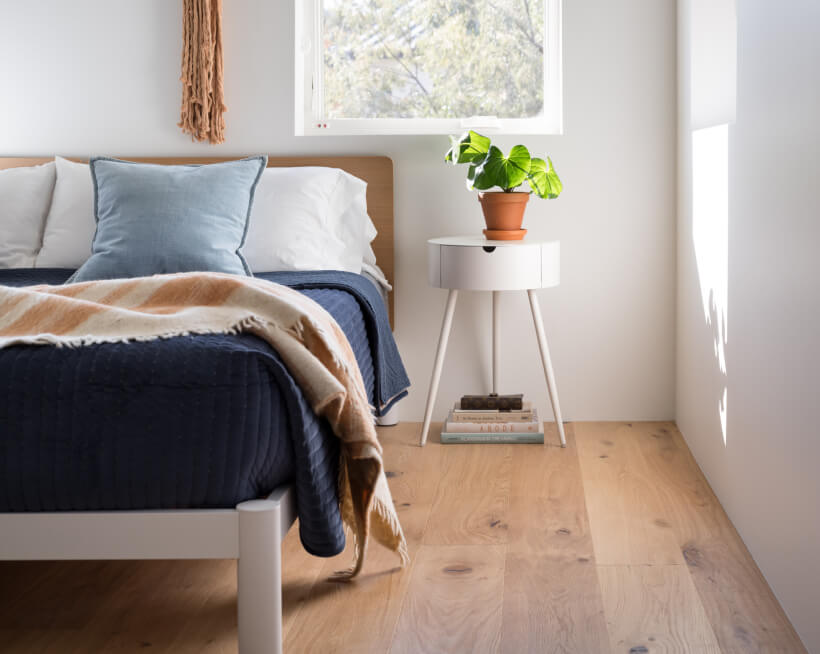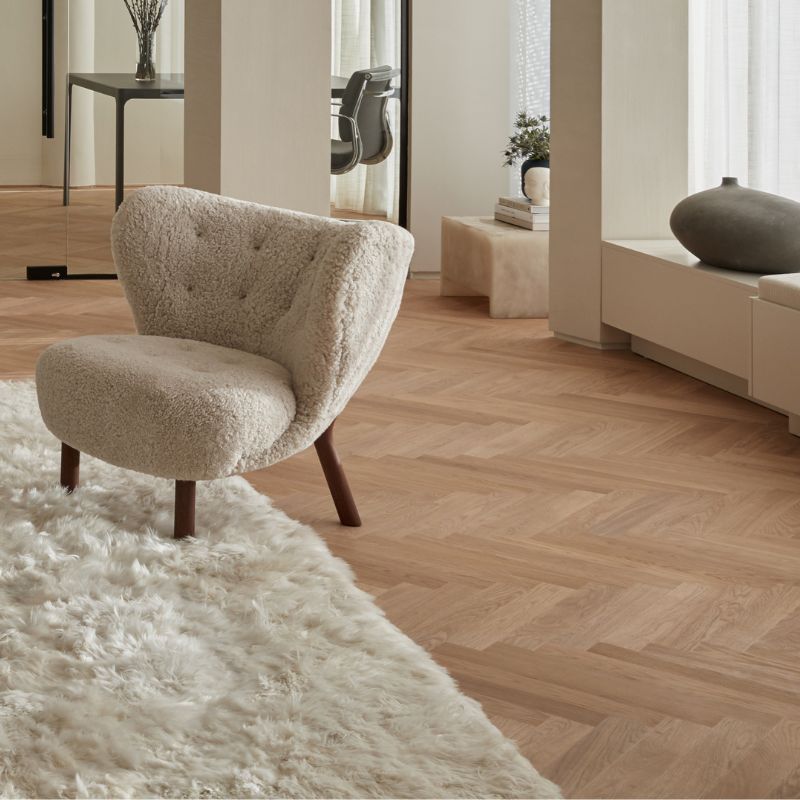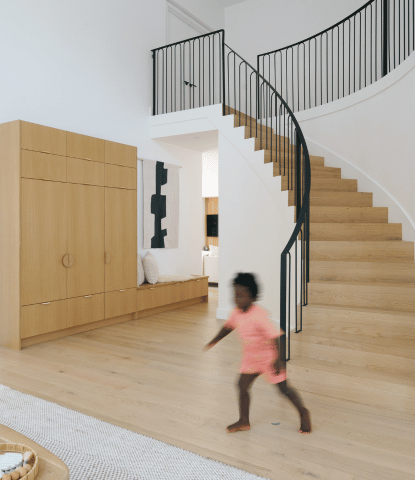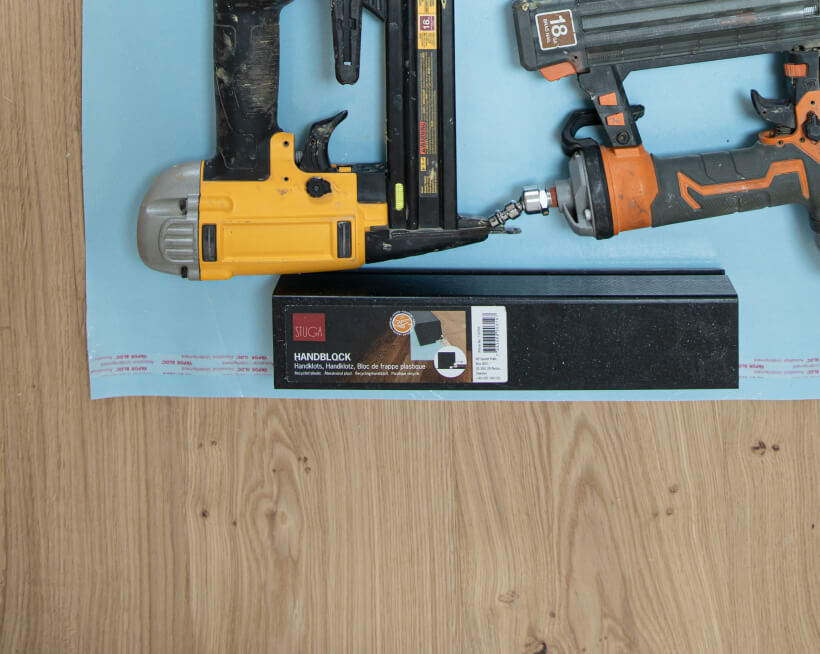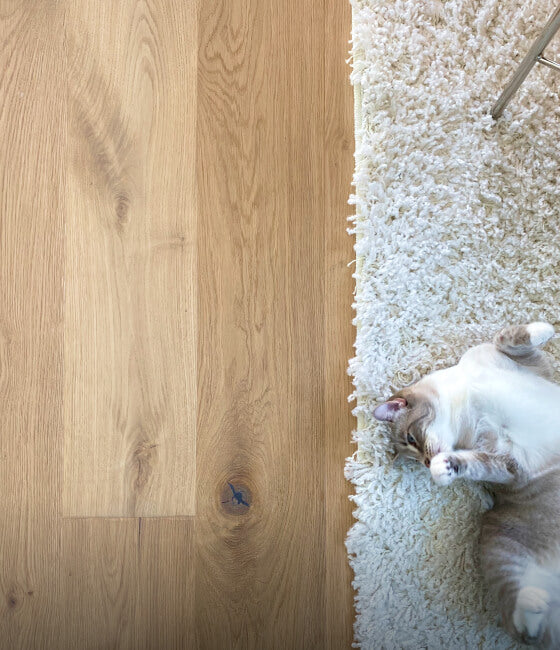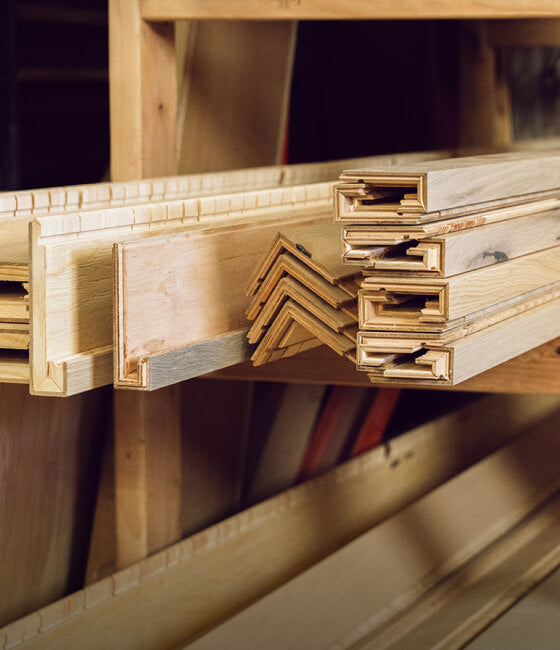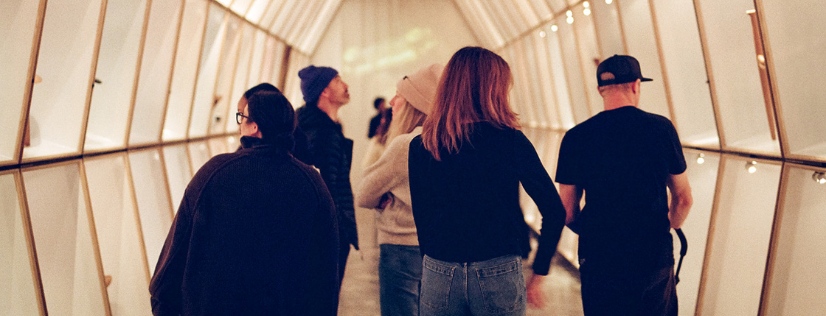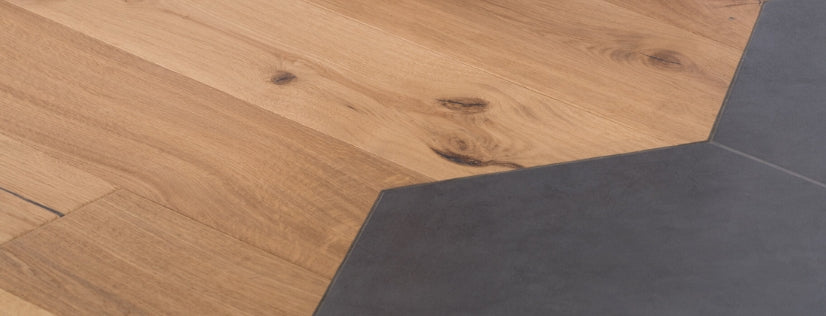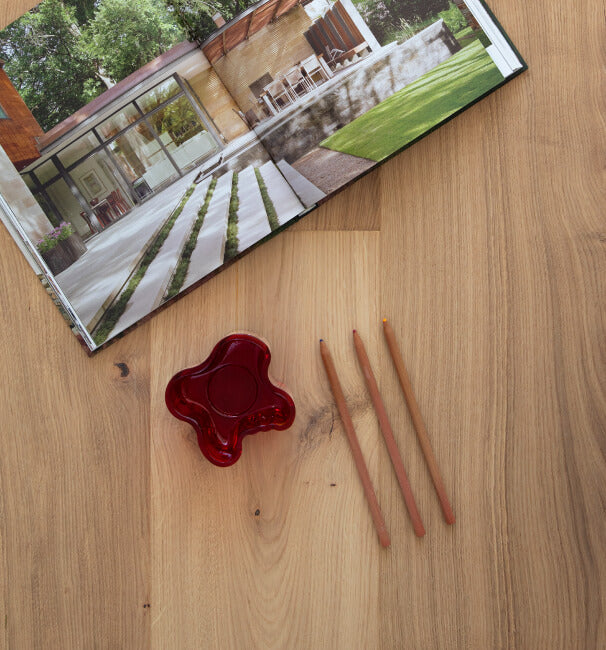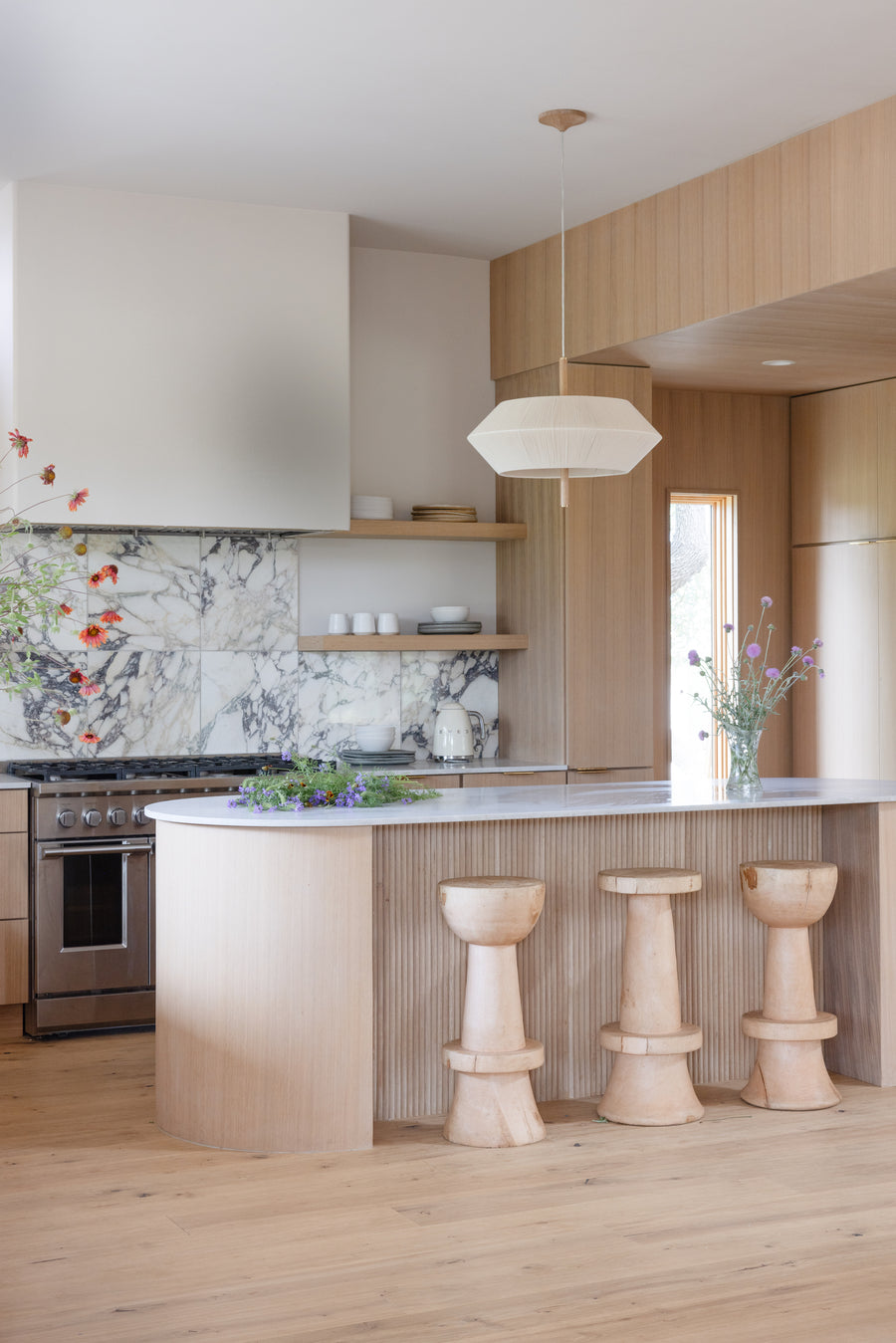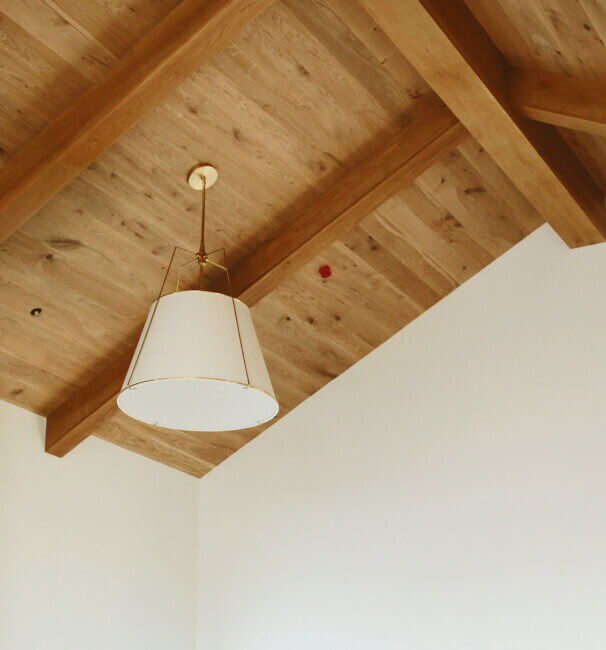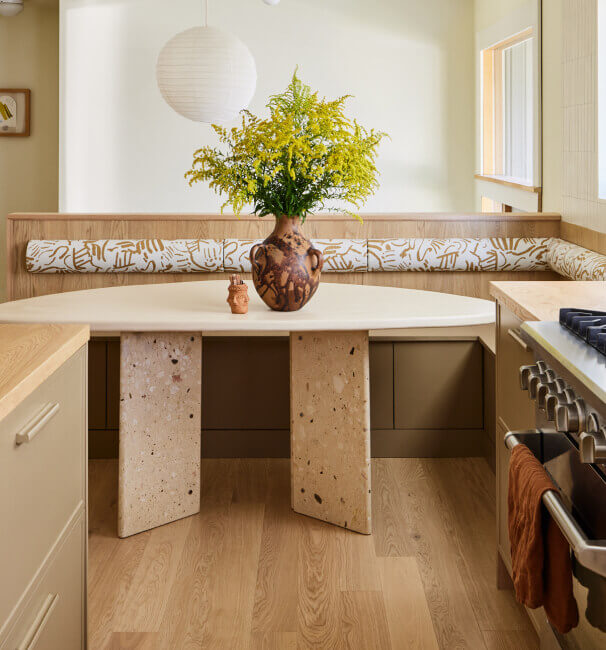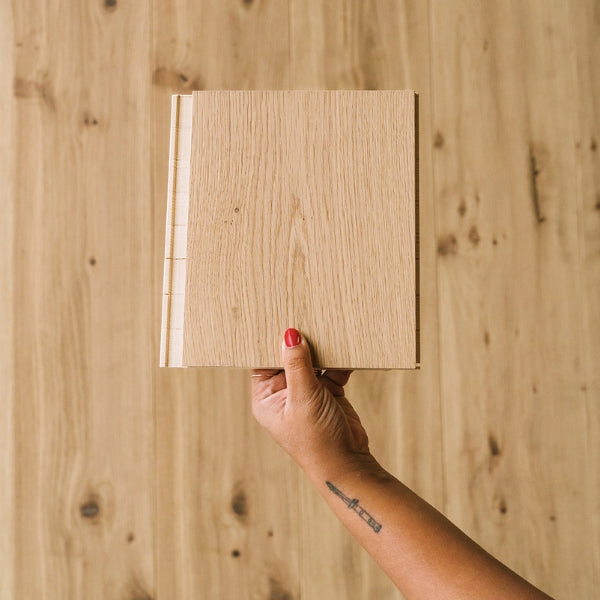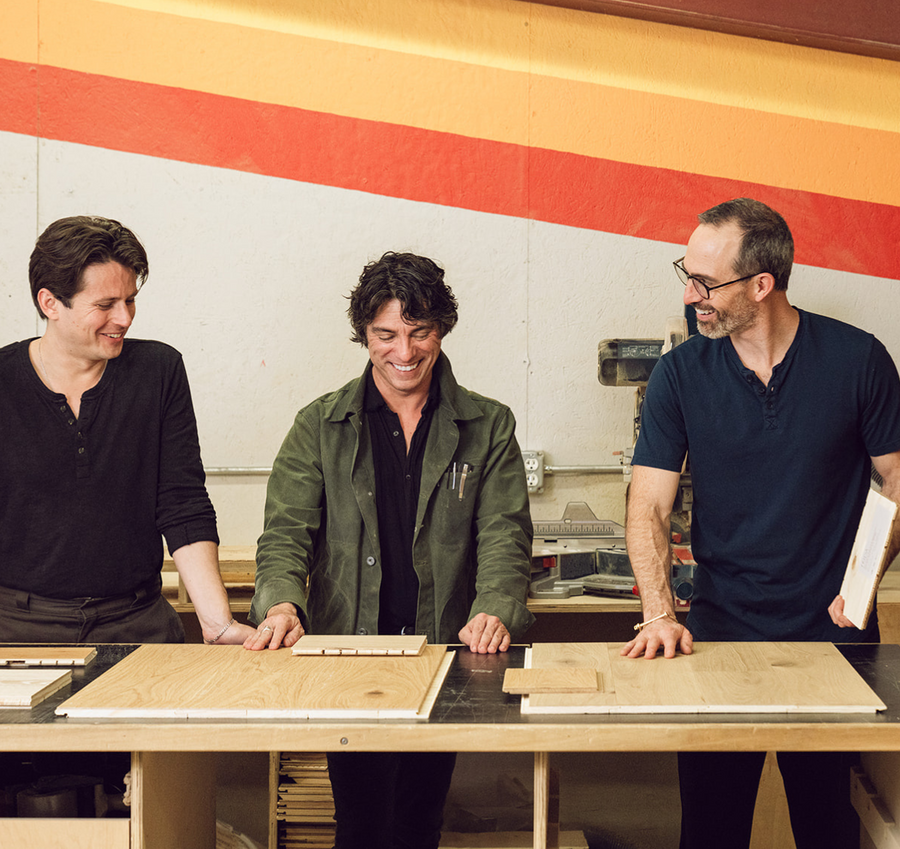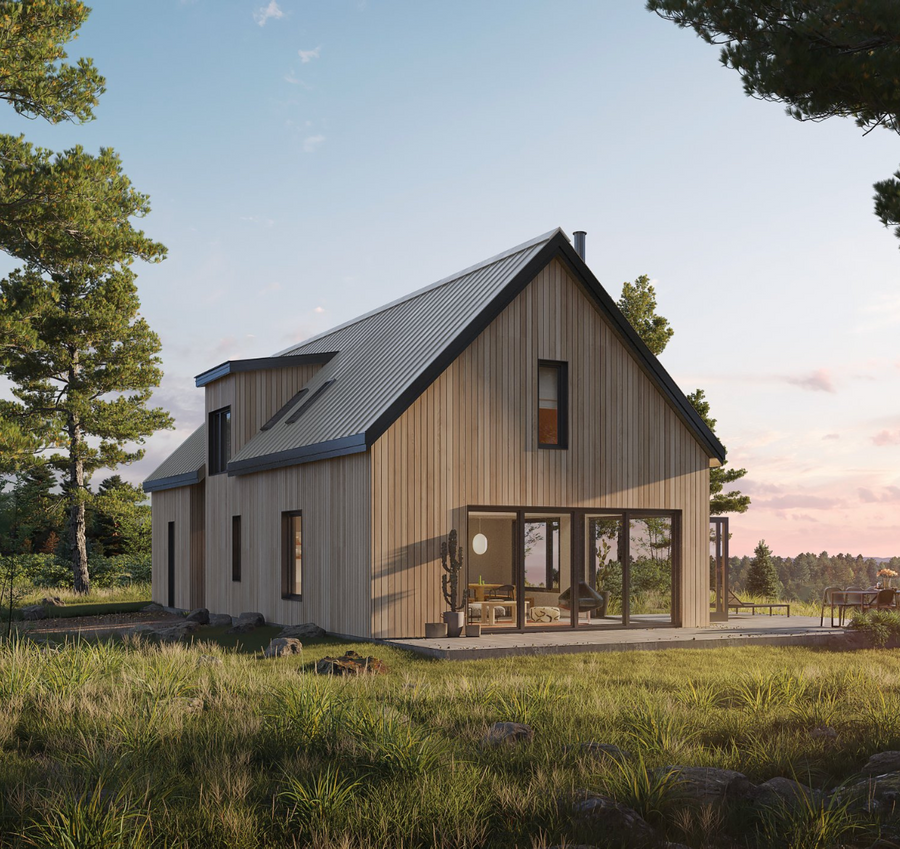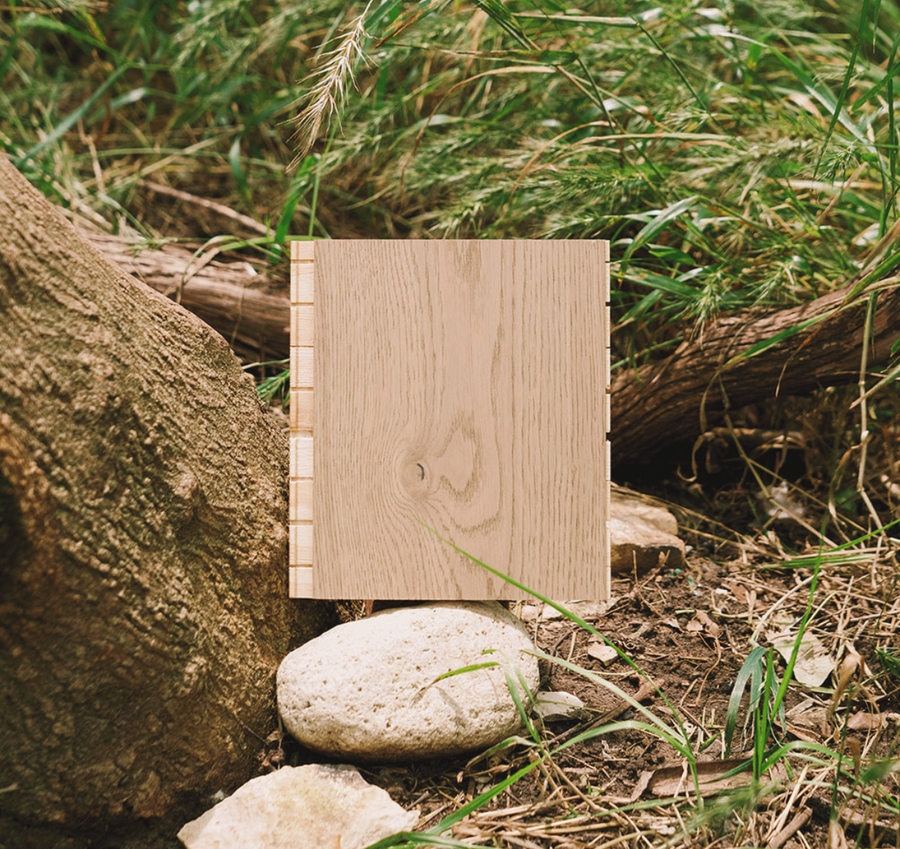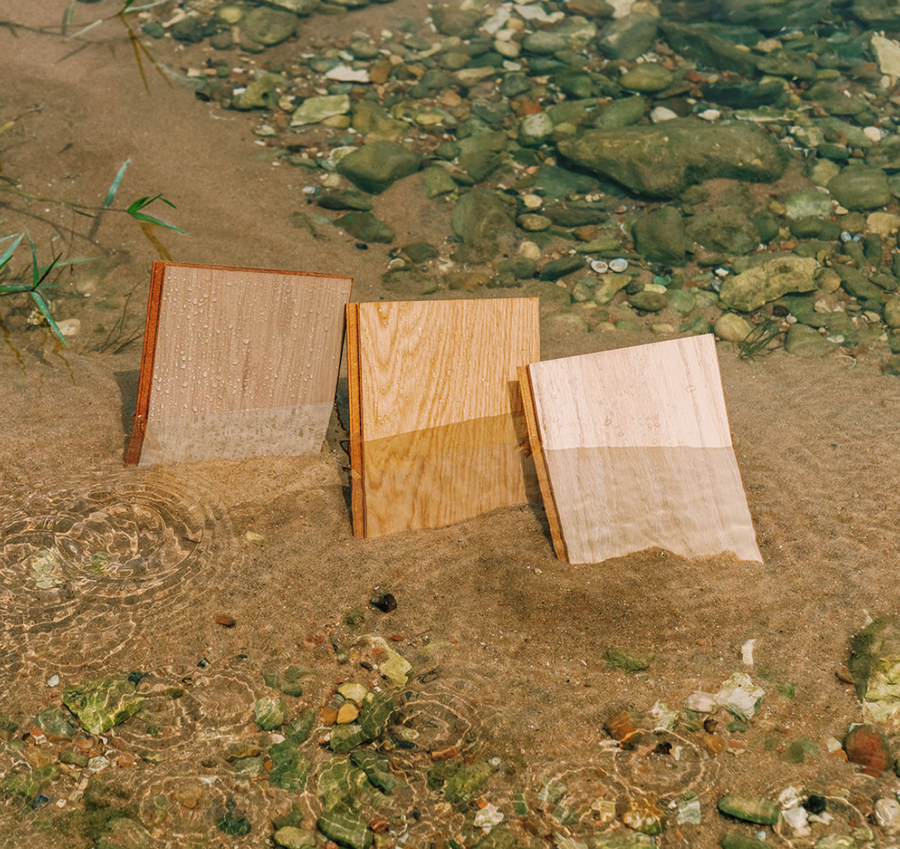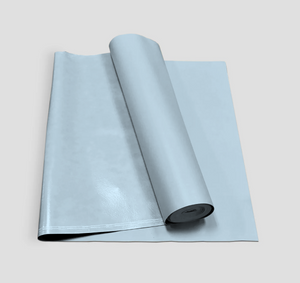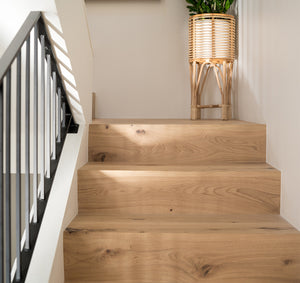March 13, 2025
The Beauty of Medullary Rays in White Oak Floors
by Haley Holm-Pedersen
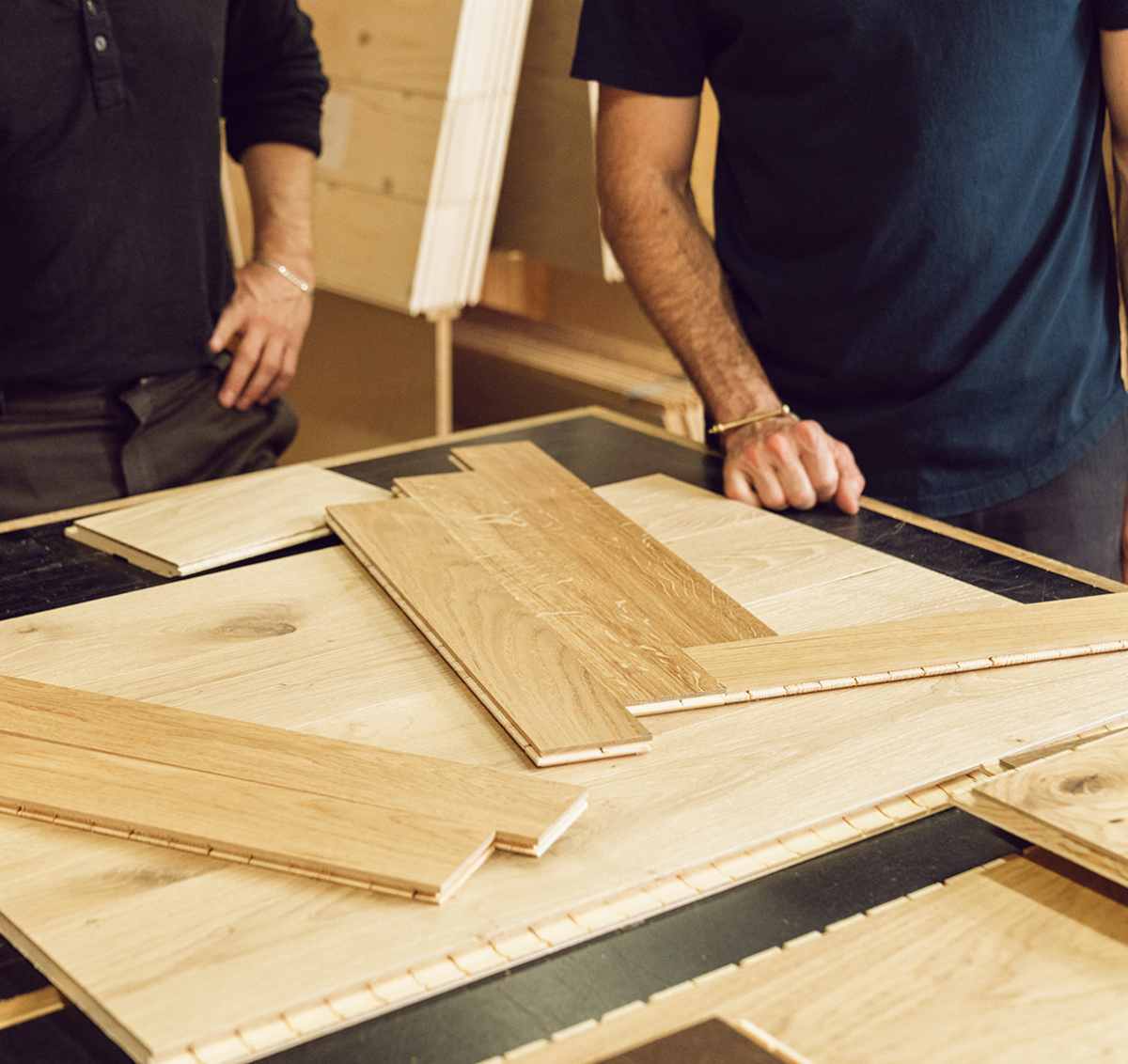
Mixed into these planks of Old Town — our natural oak herringbone — are two boards with prominent medullary rays.
When you choose white oak flooring, you're selecting more than just a surface to walk on—you're inviting a piece of nature’s artistry into your space. One of the most captivating natural features found in white oak is the presence of medullary rays — sometimes called ray flakes, pith rays, oak figures, or tiger stripes. While some might mistake these unique patterns for imperfections at first glance, medullary rays are anything but flaws. At Stuga, we see them as nature’s beauty marks.
In this post, we’ll dive into the biology of medullary rays, why they appear in certain cuts of white oak, and the history of their admiration in design.

The lines that radiate from the center of this tree stump are examples of medullary rays.
What Are Medullary Rays? A Peek into Tree Biology
Medullary rays are radial sheets of cells that extend from the center of the tree trunk outwards, serving a vital role in the tree's health. Their main job is to transport nutrients horizontally, helping to store and distribute energy throughout the tree. These rays are more pronounced in certain species, with white oak being one of the most notable examples.
When white oak is cut, these rays can appear as shimmering, ribbon-like patterns that run perpendicular to the grain. In quartersawn planks—where the log is sliced at a right angle to the growth rings—medullary rays are especially prominent, creating stunning flecks and figures that seem to catch the light from different angles.

Note the plank in the top right of this shot of Tivoli by House Lars Built — it features quite a few prominent medullary rays.
Why Do Medullary Rays Show Up in White Oak Floors?
Not all wood cuts reveal medullary rays equally. In white oak, quartersawn and riftsawn cuts are most likely to showcase these features. When the log is cut this way, the internal structure of the medullary rays aligns with the surface of the plank, making them visible as unique patterns and textures. Most Stuga floors are made with a mix of plainsawn, quartersawn, and riftsawn planks — so you’ll likely find occasional rays.
The beauty of these rays lies in their unpredictability. No two planks are the same—some might display subtle, delicate lines, while others boast bold, eye-catching figures. This natural variation is part of what makes white oak flooring so special. At Stuga, we believe that embracing these variations rather than masking them allows each floor to tell its own story.

Visit historic buildings in Europe, and you’ll likely see medullary rays in many of the original floors and woodwork. We found many examples on our recent trip to Sweden.
A History of Admiration: Medullary Rays in Design
The appreciation for medullary rays isn’t new. Historically, these features have been sought after in fine woodworking and furniture making, particularly during the Arts and Crafts movement of the late 19th and early 20th centuries. Renowned designers like Gustav Stickley celebrated the natural beauty of white oak, emphasizing medullary rays in their pieces to highlight the craftsmanship and authenticity of the material.

This table, designed by Gustav Stickley, features prominent rays - consistent with the designer’s typical style.
In architectural history, medullary rays have been a hallmark of prestige. From grand English manor houses to vintage parquet floors in Parisian apartments, the presence of these rays has long been a sign of quality and taste. This legacy continues today, with designers actively seeking white oak with visible rays for projects that demand both character and elegance.
From Misunderstood to Must-Have
It’s true that some people, upon first encountering medullary rays, might mistake them for imperfections. However, much like the knots and mineral streaks that add personality to wood, medullary rays are a natural characteristic that grows on you over time. The more you live with them, the more you’ll come to appreciate the way they catch the light and add depth to your floors.
At Stuga, we take pride in offering white oak floors that celebrate these natural variations. We believe that wood interiors foster a connection to nature that enhances your wellbeing.
So, the next time you spot those shimmering flecks and swirling patterns on your white oak floors, know that you're standing on a piece of history and a work of art. Embrace the beauty of medullary rays—because at Stuga, we sure do.
